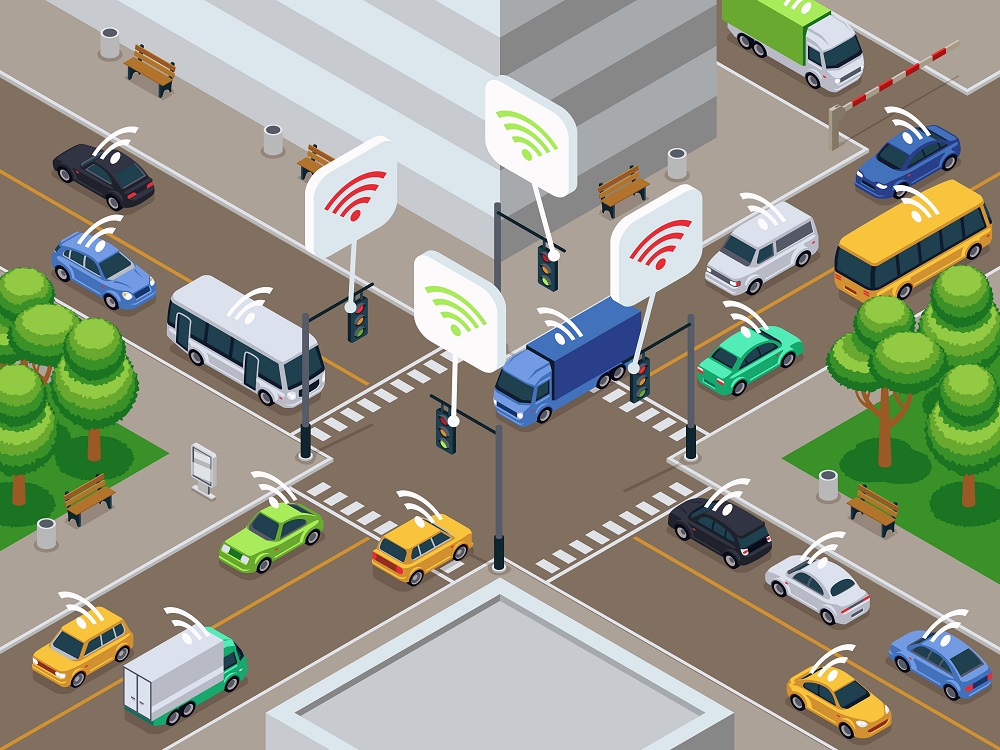
As smart vehicles take to the streets, a new Internet-of-Things like architecture is needed to keep them safe and efficient. Enter the Internet-of-Vehicles, investigated by a team at Khalifa University to make more secure and intelligent.
With companies around the world in the race to put the first truly driverless cars on the road, one of the first steps is empowering these vehicles with the ability to communicate and interact with each other. Much like the Internet-of-Things, where intelligent and connected devices exist on a network, the Internet-of-Vehicles allows vehicles to exchange information, efficiently and safely with each other, as well as with infrastructure in smart cities.
The Internet-of-Vehicles (IoV) is a network of cars communicating with each other and the systems in place around them, creating a network with intelligent devices as participants.
A multidisciplinary research team, including Dr. Hadi Otrok and Dr. Rabeb Mizouni, Associate Professors in the Department of Electrical Engineering and Computer Science, has investigated the use of machine learning and blockchain in IoV. However, such integration has its challenges, with the research team suggesting the use of a new Vehicular Edge Computing-based architecture to embed both technologies.
“The number of smart vehicles in IoV is going to increase drastically in the coming years,” said Dr. Otrok. “Therefore, careful consideration must be taken to manage the IoV infrastructure efficiently.”
This new generation of vehicles use complex applications that require intelligent decision making, which in turn require a lot of computing power. Vehicular Edge Computing (VEC) can meet this demand for computation, using computation devices on the roadside or in proximity to the vehicles.
The increase in Internet-of-Things devices at the edge of the network—physically distanced from the processing and computing data centers of the network—produces a massive amount of data to be computed at data centers, potentially pushing network bandwidth requirements to the limit. These data centers may not be able to guarantee the required transfer rates or response times that are critical in the real-time computing needed for smart vehicles to navigate, for example.
Additionally, devices at the edge constantly consume data coming from the cloud. Moving computation away from data centers towards the edge of the network, where the vehicles are, uses computation devices to perform tasks and provide services on behalf of the cloud.
This architecture facilitates communication, computation and data sharing among vehicles, which is more convenient for dynamic environments. Machine learning techniques can then be used to optimally decide and schedule tasks that need to be offloaded to the VEC infrastructure and thus support network management.
At the same time, more automated vehicles means more data that needs to be protected. This is where blockchain could help. Blockchain is a decentralized and distributed ledger of transactions: no single authority or company owns the data as all data is stored in a decentralized way. Because transactions are recorded in secure blocks on the blockchain, they can always be viewed, but it are nearly impossible to alter. This immutability eliminates the need for a central intermediary.
“Blockchain’s decentralized and security-enhancing architecture offers the trustworthiness needed to make this work,” said Dr. Mizouni. “But using both machine learning techniques and blockchain exhausts the infrastructure, consuming the computation resources needed for the smart vehicles to function. Using a multi-layered hybrid blockchain-based VEC architecture can overcome this issue.”
The architecture proposed by the research team supposes that vehicles on the road are always connected to the network edge. The data they generate from their sensors is sent to a road-side unit (RSU) where it is stored, filtered and transferred securely using a blockchain for anonymity and data protection. In this way, data generated by the cars is sent securely to powerful servers for processing, where the computation tasks are executed.
“Vehicles are becoming smarter, but such intelligence comes at the cost of needing complex computation,” explained Dr. Otrok. “Even though smart vehicles nowadays are embedded with strong computation resources, these might not be enough to meet all the complex applications that are becoming necessary. This is where offloading the problems to the Vehicular Edge can help advance the field.”
Jade Sterling
Science Writer
22 October 2020






